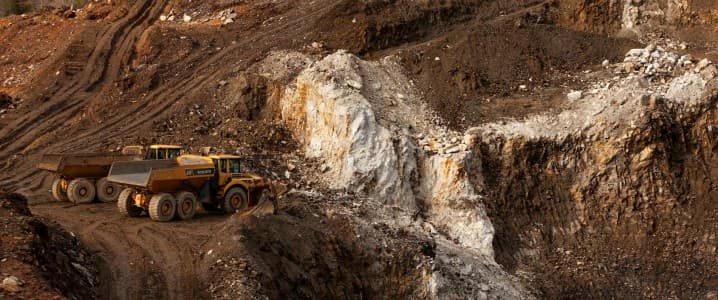Copyright OilPrice

Canada’s Liberal government on Tuesday proposed a C$2 billion ($1.4 billion) sovereign fund for critical minerals, alongside hundreds of millions in new mining industry spending and an expansion of exploration tax credits, according to the federal budget released on April 1. The initiative aims to bolster domestic supply chains, attract global investment, and strengthen national security by securing a reliable supply of critcal minerals essential for defense, semiconductors, and clean energy technologies. Core Budget Measures Target Critical Minerals The centerpiece of the plan is the Canada Critical Minerals Investment Fund, which will be managed by Natural Resources Canada and is designed to provide equity investments, loan guarantees, and offtake agreements for eligible critical mineral projects and companies. Budget documents indicate Natural Resources Canada will receive C$50 million over five years to facilitate the fund's establishment. An additional key investment vehicle, the First and Last Mile Fund, is earmarked for near-term critical minerals projects to expedite their transition to production. This fund will receive approximately C$372 million over four years, starting in fiscal year 2026-27, and will absorb the existing Critical Minerals Infrastructure Fund, utilizing its existing funding envelope to provide up to C$1.5 billion in support through 2029-30. Furthermore, the budget allocates C$585 million over four years under a new Climate Competitiveness Strategy to support various critical minerals projects. Another significant expenditure is C$443 million over five years to be shared between Natural Resources Canada and the department of Innovation, Science and Economic Development. This funding is intended to support processing technologies, joint investments with allied nations in Canadian projects, and the stockpiling of critical minerals to reinforce both Canadian and allied national security. Expansion of Exploration Tax Credits and Industrial Incentives In an effort to stimulate exploration, the government plans to broaden the eligibility for the Critical Mineral Exploration Tax Credit (CMETC). This expansion will now include 12 new minerals crucial for various strategic sectors: bismuth, cesium, chromium, fluorspar, germanium, indium, manganese, molybdenum, niobium, tantalum, tin, and tungsten. The CMETC expansion applies to specific exploration expenditures for these minerals and complements Canada’s existing flow-through share structure, a mechanism often used to channel capital from investors into junior mining companies. The government is also moving to replace the existing industrial emissions cap with a new industrial emissions price, which will be set by Ottawa in consultation with the provinces and territories. This measure is intended to align with Canada's broader goal of achieving net-zero emissions by 2050. Moreover, the budget proposes new incentives designed to reduce the tax on capital spending, such as on buildings for a critical minerals’ processor, potentially lowering it to 0.4%. This compares favorably to a 12% tax rate in the United States on similar infrastructure spending, according to a report by the Canadian Broadcasting Corporation (CBC), a move aimed at recouping manufacturing jobs lost to south of the border. Industry Reaction and Market Context The mining sector quickly welcomed the government's commitment. Pierre Gratton, Chief Executive Officer (CEO) of the Mining Association of Canada (MAC), stated that the budget confirms the federal government's “unwavering commitment to the Critical Minerals Strategy released three years ago.” “These measures, taken together, send a powerful signal to the mining industry, global investors and Canada’s allies that Canada is very serious about improving the competitiveness of Canada’s mining industry,” Gratton said in a statement. He later added that the proposals promise to "usher in a new era in mining investment,” creating high-paying jobs and boosting exports. The new spending and incentives are framed within a broader global context of intensified competition for critical minerals, which are vital inputs for the electric vehicle battery supply chain and renewable energy infrastructure. By strengthening its domestic mining and processing capabilities, Canada aims to establish itself as a reliable, Western alternative to supply sources currently dominated by other nations. The overall federal budget forecasts a C$78.3 billion deficit for the fiscal year ending March 31, with a plan to cut 40,000 public sector jobs by fiscal year 2028-29. The budget requires approval in Parliament, where Prime Minister Mark Carney’s government holds a minority of seats, necessitating support from opposition lawmakers for passage. By Michael Kern for Oilprice.com More Top Reads From Oilprice.com Pakistan Revives Offshore Exploration With 23 Oil Block Awards Oil Tanker Storage Surges as Russia and Iran Face U.S. Sanctions ConocoPhillips Boosts Dividend After Strong Third Quarter Earnings Beat



